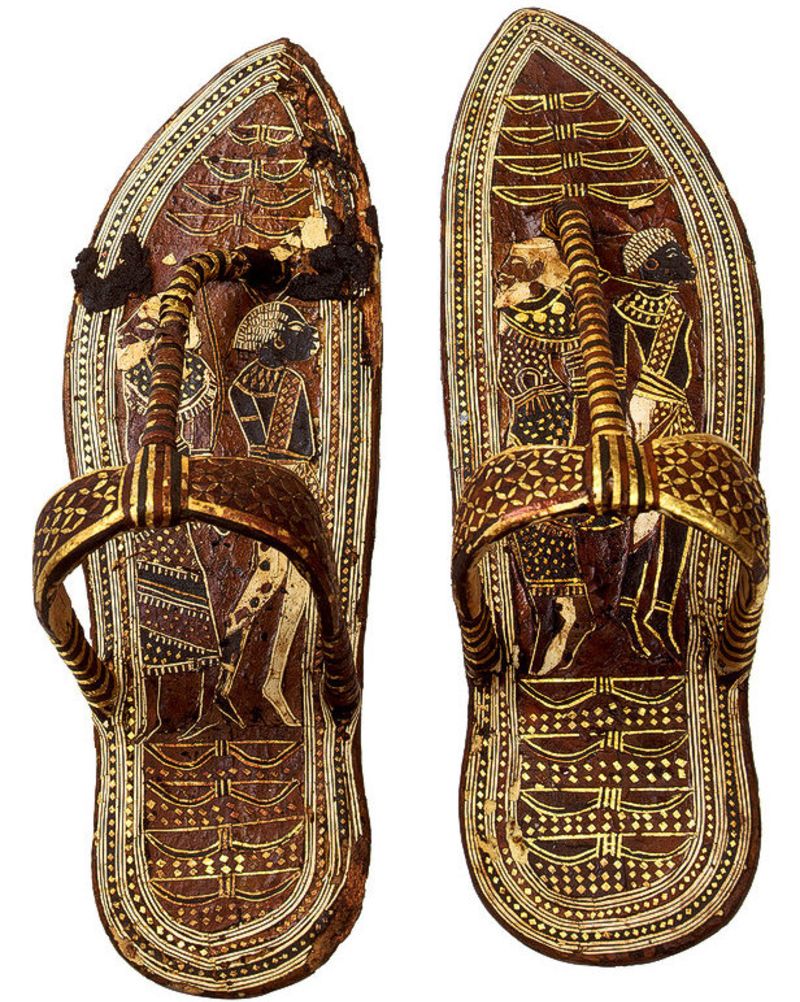Unearthing The Mystique Of King Tutankhamun's Sandals
King Tutankhamun, the young pharaoh of ancient Egypt, is perhaps best known for the treasures found in his tomb, including his stunning sandals. These artifacts not only showcase the remarkable craftsmanship of the time but also provide insight into the culture and beliefs of the ancient Egyptians. As we delve into the history of King Tutankhamun's sandals, we uncover the stories they tell and the significance they hold within the grand narrative of Egypt's past.
Discovered in 1922 by British archaeologist Howard Carter, King Tutankhamun's tomb was a treasure trove of artifacts, including the iconic sandals that adorned the young ruler's feet. These sandals, made from a combination of materials, reflect both the practical needs of a pharaoh and the intricate artistry characteristic of the era. As we explore the various facets of these sandals, we uncover their role in ceremonial practices and daily life in ancient Egypt.
In this article, we will delve into the history, craftsmanship, and cultural significance of King Tutankhamun's sandals. From their design to their discovery, we aim to shed light on this fascinating piece of history that continues to captivate scholars and enthusiasts alike. Join us as we walk through time, exploring the legacy of one of history's most famous young kings and the sandals that accompanied him on his journey into the afterlife.
What Do King Tutankhamun's Sandals Look Like?
King Tutankhamun's sandals are a remarkable blend of functionality and artistry. Made primarily from leather, they feature intricate designs that reflect the craftsmanship of the ancient Egyptians. The sandals are often adorned with gold leaf and precious stones, indicating their significance and the high status of their owner. Here are some notable features:
- Crafted from durable leather to withstand the elements.
- Ornate designs highlighting the artistry of ancient artisans.
- Inlaid with materials such as gold and semi-precious stones.
- Symbolic motifs that reflect the beliefs and culture of ancient Egypt.
Who Designed King Tutankhamun's Sandals?
The exact individual responsible for the design of King Tutankhamun's sandals remains a mystery, but it is widely believed that they were crafted by skilled artisans working under the patronage of the pharaoh. These craftsmen were highly regarded in society, and their work was often linked to the status and power of the ruling elite. The sandals' intricate designs and luxurious materials indicate that they were the result of a collaborative effort among the best artisans of the time.
What Materials Were Used in King Tutankhamun's Sandals?
The sandals were constructed using a variety of materials, each chosen for its durability, beauty, and significance. The primary material used was leather, which provided a comfortable and resilient base. Additional materials included:
- Gold Leaf: Used for decorative elements, signifying wealth and divinity.
- Precious Stones: Inlaid into the sandals to add color and represent various deities.
- Wood: Some sandals incorporated wooden elements for added structure.
What Do King Tutankhamun's Sandals Symbolize?
In ancient Egypt, sandals were not merely functional items but also held deep symbolic meanings. King Tutankhamun's sandals, in particular, symbolize the pharaoh's connection to the divine. They reflect the following beliefs:
- Royalty: The sandals signify the high status of the wearer, distinguishing the pharaoh from commoners.
- Protection: Sandals were seen as a form of protection, both physically and spiritually.
- Connection to the Afterlife: The intricate designs often included motifs that represented the journey to the afterlife.
What Was the Purpose of King Tutankhamun's Sandals?
The sandals served several purposes in King Tutankhamun's life:
- Daily Wear: They were likely worn during daily activities and royal duties.
- Ceremonial Use: Specially designed sandals were used during religious ceremonies and significant events.
- Burial Attire: The sandals were placed in the tomb as part of the pharaoh's burial ensemble, ensuring he was well-equipped for his journey in the afterlife.
How Were King Tutankhamun's Sandals Discovered?
The sandals were discovered in the tomb of King Tutankhamun in 1922, a monumental archaeological find that captivated the world. Howard Carter and his team unearthed the sandals along with a wealth of other artifacts, all meticulously arranged in the burial chamber. The sandals were found in a remarkable state of preservation, thanks in part to the dry conditions of the Egyptian tomb. This discovery provided invaluable insights into the life and times of the young pharaoh.
What Impact Did the Discovery of King Tutankhamun's Sandals Have?
The discovery of King Tutankhamun's sandals, along with other treasures from his tomb, had a profound impact on archaeology and Egyptology. It sparked worldwide interest in ancient Egypt and led to:
- Increased Research: Scholars and archaeologists intensified their studies of ancient Egyptian culture and history.
- Tourism Boom: The treasures of Tutankhamun became a focal point for tourism in Egypt.
- Public Fascination: The life and legacy of King Tutankhamun captured the public's imagination, leading to numerous exhibitions and documentaries.
Conclusion: The Legacy of King Tutankhamun's Sandals
King Tutankhamun's sandals are more than just footwear; they are a window into the past, offering glimpses into the life of a young pharaoh and the rich culture of ancient Egypt. The craftsmanship, materials, and symbolism embedded in these sandals reflect the artistry and beliefs of a civilization long gone yet still resonant today. As we continue to explore the treasures of Tutankhamun's tomb, the sandals remain a poignant reminder of the legacy of one of history's most intriguing figures.
Article Recommendations
- Maligoshik Erome
- Movieshubapkcloud
- Cardi B Boobs
- Hdhub4 Bollywood
- Cinas World Erome
- Cristin Milioti Son
- Wentworth Miller Wife
- Google Rank Tracking
- Maligoshik Onlyfans
- Downloadhub
![Tutankhamun's sandals found in his tomb. [1700x2060] ArtefactPorn](https://i2.wp.com/external-preview.redd.it/DACUmnVBmyxgjBXlFDvpyF1xaroPaSenzKhnsmlpe28.jpg?auto=webp&s=2d1f85394b2ebccf5f02a3631f801b60b4af6ba9)



